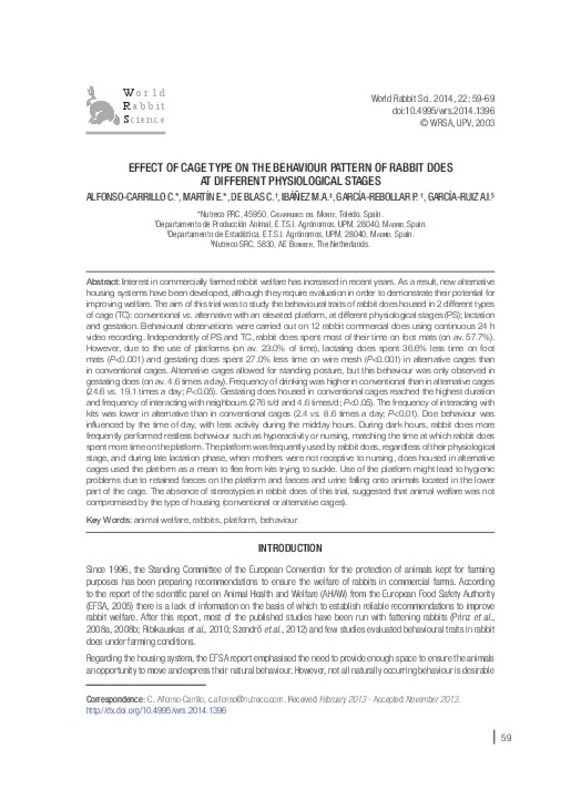JavaScript is disabled for your browser. Some features of this site may not work without it.
Buscar en RiuNet
Listar
Mi cuenta
Estadísticas
Ayuda RiuNet
Admin. UPV
Effect of cage type on the behaviour patterns of rabbit does at different physiological stages
Mostrar el registro completo del ítem
Alfonso-Carrillo, C.; Martín, E.; Blas, CD.; Ibáñez, MÁ.; García-Rebollar, P.; García-Ruiz, AI. (2014). Effect of cage type on the behaviour patterns of rabbit does at different physiological stages. World Rabbit Science. 22(1):59-69. https://doi.org/10.4995/wrs.2014.1396
Por favor, use este identificador para citar o enlazar este ítem: http://hdl.handle.net/10251/39113
Ficheros en el ítem
Metadatos del ítem
| Título: | Effect of cage type on the behaviour patterns of rabbit does at different physiological stages | |
| Autor: | Alfonso-Carrillo, Clara Martín, Erika Blas, Carlos de Ibáñez, Miguel Ángel García-Rebollar, Paloma García-Ruiz, Ana Isabel | |
| Fecha difusión: |
|
|
| Resumen: |
[EN] Interest in commercially farmed rabbit welfare has increased in recent years. As a result, new alternativehousing systems have been developed, although they require evaluation in order to demonstrate their potential ...[+]
|
|
| Palabras clave: |
|
|
| Derechos de uso: | Reserva de todos los derechos | |
| Fuente: |
|
|
| DOI: |
|
|
| Editorial: |
|
|
| Versión del editor: | https://doi.org/10.4995/wrs.2014.1396 | |
| Tipo: |
|








